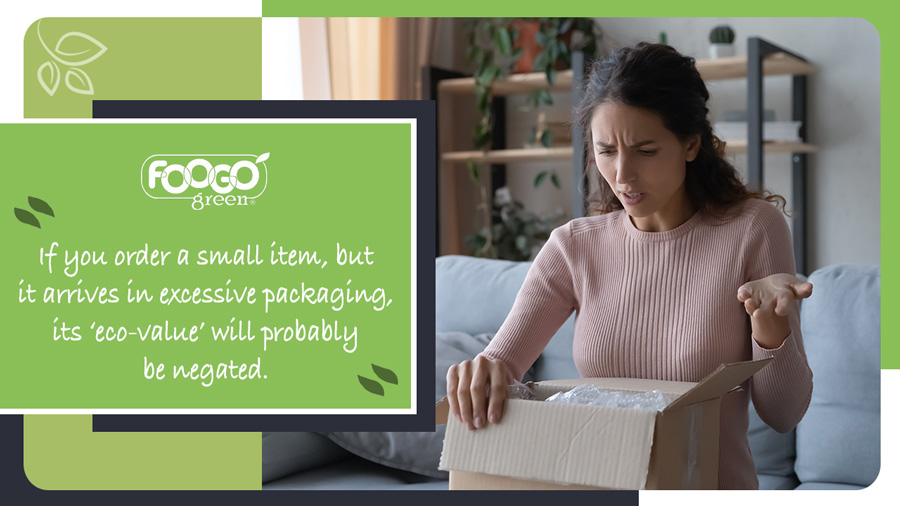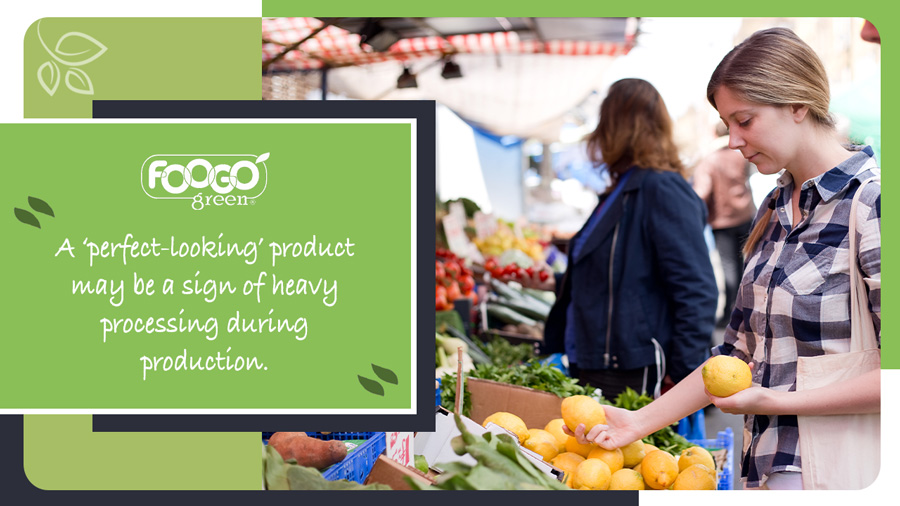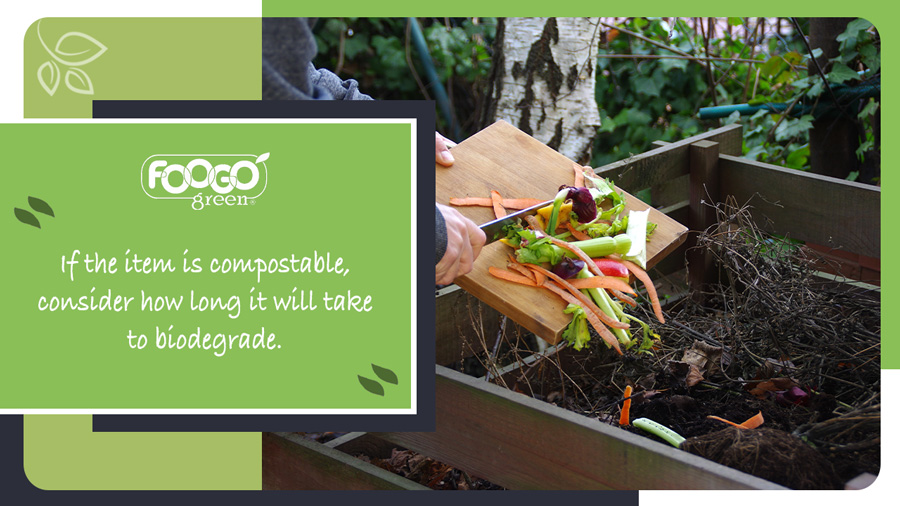Spotting an eco-friendly product is not just about looking at what the item is made from. You should also check:
- how it is made
- where it is made
- how it is packaged
- how it is delivered
A recyclable cardboard item may look eco-friendly. However, if it’s made in a sweat shop or from 50% non-sustainable resources, it may not be truly green or ethical.

Eco-friendly packaging
If you order a small object and it comes in a huge box or is wrapped in plastic or bubble wrap , then any ‘eco-value’ the product itself has will probably be negated by its packaging.
However, just because an item appears to be wrapped in plastic doesn’t mean it is not eco-friendly. There are a few sustainable and recyclable materials that can be used for packaging, and which look like plastic.
Carbon-conscious delivery
When ordering online, consider how the item will be delivered and the carbon footprint involved. Locally sourced items will nearly always have a lower carbon footprint, but bulk buying or delivery also helps reduce the carbon impact.
Labelling that isn’t greenwashing
Generic, simple labels on packaging such as ‘eco-friendly’ could mean anything. Look for specific claims such as ‘100% natural’ which give a marginally better indication of the product’s eco-friendly credentials. Check also whether the product or producer has any official certifications to their name.
Sustainable and safe materials
Check what the product is made of and how it was produced. For example, was it made in a factory that uses renewable energy sources? Was it manufactured using natural resources? Do the primary and secondary industries that create the product support the communities involved in production?

Natural vs processed products
Nature isn’t perfect; a ‘perfect-looking’ product is often a sign of a product that has been heavily processed, and which may not be very natural.
Environmental visions on corporate websites
This is where you’ll often find important details about the producer and their approach towards sustainability. Many companies publish a mission statement or details of their sustainability policy on their website.
Green values appearing in social media
If you’re struggling to get a good idea of a product’s eco credentials, check the company’s social media pages. Do they appear to be trading according their stated values? Most genuinely eco-friendly companies will share posts about sustainability and eco-initiatives.
Is the product recyclable or compostable?
There are several issues to address here. For example:
- Can you re-use the product? If so, how long will you keep it for?
- How do you dispose of it?
- Can it be recycled as one item, or does it have to be separated into different parts?
- Is it compostable? If so, how long will it take to break down ?

Animal-free testing
With some items, you may wish to check whether it was tested on animals. Again, a check of the company website or the product labelling may reveal this information. If in doubt, contact the company or carry out some online research through reviews, forums, and third-party reports.
Reliable, trustworthy eco-friendly tableware
At FOOGO green we believe convenience shouldn’t be at the cost of our planet or principles. Our biodegradable and reusable tableware is made from sustainable materials, which can be composted at home when finished with.
In addition to being certified carbon neutral, FOOGO green also meaningfully invests in the communities harvesting the fallen areca palm leaves used to manufacture our tableware.
For more advice on becoming a better eco-friendly consumer , our extensive blog archive contains information on a range of environmentally friendly lifestyle choices and products.

